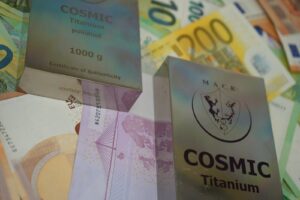 Introduction
Introduction
In the second half of the 20th century, the world witnessed how small dots on the map—Singapore, Hong Kong, Macau—emerged as centers of gravity through precise institutional design: monetary anchors, predictable rules, fiscal base, and legal discipline. These examples demonstrate that resilience arises not from scale or resource endowment, but from structure. This article adopts their experience as a “blueprint” and projects it beyond geography—toward the decentralized reserve currency COSMIC, seen as a new micro-hub of civilization.
Singapore: Discipline of Form and Institutional Assembly
The intellectual triangle of the 1960s–1980s (Lee Kuan Yew, Goh Keng Swee, S. Rajaratnam) laid out a doctrine of discipline, openness, and identity. The practical core was institutional architecture:
• EDB (1961) – a funnel for foreign direct investment.
• JTC (1968) – transformation of land into industrial parks and clusters.
• Temasek (1974) – commercial management of state-owned enterprises, separate from the regulator.
• GIC (1981) – long-term management of foreign reserves.
• MAS – a monetary framework based on a basket–band–crawl regime (a managed exchange rate corridor instead of interest rate targeting), minimizing imported inflation in an ultra-open economy.
Sources of resilience: mobilization of domestic savings via CPF and housing policy (HDB), capitalization of land (JTC), portfolio returns (Temasek/GIC), inflows of FDI under legal predictability.
The principle: synchronization of land policy, industrial ecosystems, sovereign funds, and monetary corridors.
Hong Kong: Nominal Anchor and Legal Minimalism
The ideological formula of “positive non-interventionism” (J. Cowperthwaite, P. Haddon-Cave) rested on three pillars:
• LERS (since 1983) – a currency board linking the HKD to the USD within a corridor of 7.75–7.85, backed by full reserve coverage.
• ICAC (since 1974) – an independent anti-corruption agency.
• Common Law, preserved under the Basic Law after 1997.
Fiscal foundation: land premiums and long-term leaseholds, plus revenue from the financial center.
The principle: minimalist policy with maximum transparency of the nominal anchor and rule of law.
Macau: Extreme Specialization and Currency Peg
The historical anchor: a gambling monopoly under STDM (1962–2002), followed by liberalization of concessions (since 2002).
Currency framework: the pataca (MOP) pegged to the HKD (currency board), with the HKD linked to the USD via LERS. The regulator (DICJ) defines the licensing and tax structure of the industry.
Fiscal dominance: gaming taxes (2023–2025, the overwhelming majority of state revenue).
The principle: specialized economy + hard currency peg + concentrated fiscal base.
Comparable Global “Nodes”
• Dubai (JAFZA, DIFC with its own courts based on common law, fiscal modernization)
• Shenzhen (China’s first SEZ, a laboratory of industrialization and tech growth)
• Colón, Panama (global re-export zone since 1948)
• Labuan (Malaysia’s international finance zone since 1990)
• Monaco (historic fusion of private banking, service economy, and tax neutrality)
In each case: pinpoint regulation, capital-attracting institutions, and a transparent nominal anchor.
A Comparative “Blueprint” of the Micro-Hub
• Nominal Anchor (currency board/managed corridor)
• Capital Attraction Institutions (development agencies, free zones, industrial parks)
• Fiscal Base (land premiums, infrastructure rents, specialized sectors)
• Separation of State Roles (regulation ≠ asset ownership)
• Rule of Law and Anti-Corruption (legal supremacy, independent agencies)
• Land as Capital (conversion into income-generating ecosystems)
• Human Capital (regimes for attracting key competencies)
Typical Risks of Micro-Hubs
• Fiscal mono-dependency (lessons from Macau)
• Land-driven budget volatility (lessons from Hong Kong)
• External policy and technological shifts in supply chains (lessons from Shenzhen/Dubai)
These risks are manageable if discipline of form is maintained: transparent anchors, clear rules, and multi-layered buffers.
Bridge to COSMIC: From Geography to Form
Everything above concerns the architecture of trust. Classical micro-hubs anchor trust through jurisdiction, land policy, and monetary rules. COSMIC goes one step further: it displaces the “resilience node” beyond territory and state.
Here, the anchor is not an issuer, nor a line of code—but form itself, which retains value through its very structure.
Implications:
• Without territory: resilience is freed from geography and its political cycles.
• Without issuer: no external guarantor is needed to uphold promises.
• Decentralized reserve currency: COSMIC is the first reserve node of value not reliant on market simulations or institutional intermediaries.
COSMIC Design Pattern (Conceptual Projection)
Monetary Layer
Instead of a currency board or exchange-rate corridor, COSMIC employs an anchor of form: value is fixed in a structure that requires no external validation.
Asset Governance
No “state fund,” but a regime of custodians of form and independent verification of conformity—discipline without discretion.
Fiscal Layer
No mono-revenue sources or dependency on sectors or land; the reserve is not fed by tax—it exists as reserve.
Law and Compliance
Legal compatibility is ensured via transparent authenticity protocols and open circulation procedures. The foundation lies not in “exclusive jurisdiction” but in verifiability of form.
Infrastructure Layer
Distributed geography of custody and certification, standardized verification, and reproducible access protocols to information about the form—without invoking “network” metaphors.
Risk Management
The absence of an issuer eliminates a core source of systemic vulnerability. The invariance of form reduces exposure to regulatory and political shocks.
Civilizational Significance
Singapore, Hong Kong, and Macau proved that a well-assembled structure can transform a small space into a global center of gravity. COSMIC demonstrates the next step: the center of gravity can be assembled in form, not in territory.
This removes dependency on currency policy, land cycles, fiscal monopolies, and political contingencies.
An individual gains access to a reserve that requires no one’s promises;
society acquires a node of trust unbound by any new cycle of power.
Conclusion
Classical micro-hubs were answers for their time: geography, institutions, currency rules.
COSMIC is an answer for a new era: a decentralized reserve currency whose resilience is embedded in form.
It is not a supplement to existing global monies, nor their digital replica.
It is an entirely new level of trust architecture—one in which value stands and does not dissolve into the medium.
